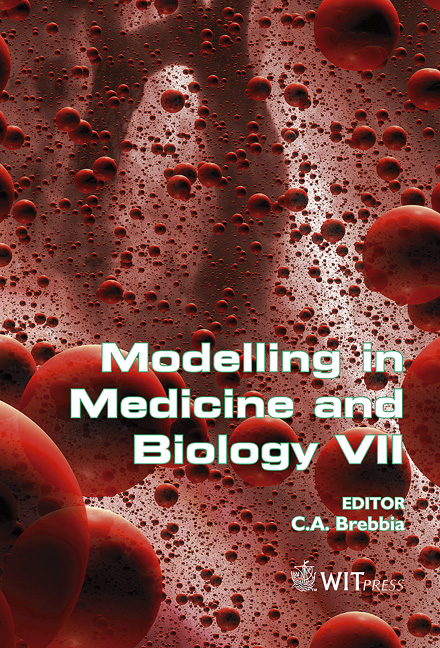Modelling Of Platelet Aggregation In Aneurysm
Price
Free (open access)
Transaction
Volume
12
Pages
10
Published
2007
Size
856 kb
Paper DOI
10.2495/BIO070051
Copyright
WIT Press
Author(s)
K. Shimano, T. Hayashi, H. Ujiie, T. Ono & Y. Enomoto
Abstract
Thrombi are often found in aneurysms and are considered to play an important role in rupture. It is crucial to scrutinise any correlation between the probability of rupture and the extent to which thrombi are generated in the aneurysm. Numerical techniques such as computational fluid dynamics (CFD) are promising tools in the biomedical field. However, there are, at present, no models that allow us to evaluate thrombus generation. The authors aim at the proposal of such a model. In the present study, the process of platelet aggregation is considered. In blood flow near the entry to an aneurysm, red blood cells are haemolysed due to high shear stress or high pressure. The ensuing release of adenosine diphosphate (ADP) induces the aggregation. Making reference to actual aggregation curves of human plasma for various ADP concentrations, the authors have modelled the rate at which the density of aggregated platelets continues to increase in the aggregation process. A combination of CFD and the present model enables us to obtain the distribution of platelets clotting in an aneurysm. Keywords: computational fluid dynamics, platelet aggregation, aneurysm. 1 Introduction Rupture of a cerebral artery aneurysm causes a life-threatening subarachnoid haemorrhage. Although not all aneurysms rupture, it is difficult to predict which aneurysms are likely to do so. Ujiie et al. [1] reported a significant correlation between the probability of rupture and aspect ratio of the aneurismal dome depth to the neck width: almost 80% of ruptured aneurysms among those investigated by them had aspect ratio more than 1.6. According to a theory proposed by Ujiie et al. [2], thrombi are likely to form in an aneurysm of high aspect ratio due to
Keywords
computational fluid dynamics, platelet aggregation, aneurysm.





